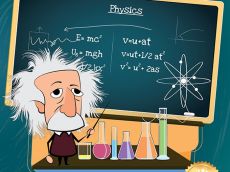Read the following passage and mark the letter A, B, C, or D on your answer sheet to indicate the correct answer to each of the questions
There are a number of natural disasters that can strike across the globe. Two that are frequently linked to one another are earthquakes and tsunamis. Both of them can cause a great amount of devastation when they hit. However, tsunamis are the direct result of earthquakes and cannot happen without them.
The Earth has three main parts. They are the crust, the mantle, and the core. The crust is the outer layer of the Earth. It is not a single piece of land. Instead, it is comprised of a number of plates. There are a few enormous plates and many smaller ones. These plates essentially rest upon the mantle, which is fluid. As a result, the plates are in constant - yet slow – motion. The plates may move away from or towards other plates. In some cases, they collide violently with the plates adjoining them. The movement of the plates causes tension in the rock. Over a long time, this tension may build up. When it is released, an earthquake happens.
Tens of thousands of earthquakes happen every year. The vast majority are so small that only scientific instruments can perceive them. Others are powerful enough that people can feel them, yet they cause little harm or damage. More powerful earthquakes, however, can cause buildings, bridges, and other structures to collapse. They may additionally injure and kill thousands of people and might even cause the land to change its appearance.
Since most of the Earth's surface is water, numerous earthquakes happen beneath the planet's oceans. Underwater earthquakes cause the seafloor to move. This results in the displacement of water in the ocean. When this occurs, a tsunami may form. This is a wave that forms on the surface and moves in all directions from the place where the earthquake happened. A tsunami moves extremely quickly and can travel thousands of kilometers. As it approaches land, the water near the coast gets sucked out to sea. This causes the tsunamis to increase in height. Minutes later, the tsunami arrives. A large tsunami - once more than ten meters in height - can travel far inland. As it does that, it can flood the land, destroy human settlements, and kill large numbers of people.
Câu 18 : The word "it" in bold in paragraph 2 refers to ________
Hãy suy nghĩ và trả lời câu hỏi trước khi xem đáp án
Lời giải:
Báo saiTừ “it” ở đoạn 2 ám chỉ đến......
- the Earth: Trái Đất
- the core: hạt nhân
- the crust: vỏ Trái Đất
- the mantle: vỏ ngoài
Dẫn chứng: The crust is the outer layer of the Earth. It is not a single piece of land. Instead, it is comprised of a number of plates.
=> “it” là “the crust”
Chọn B
Câu 19 : The word “perceive” in bold in paragraph 3 is closest in meaning to ________
Hãy suy nghĩ và trả lời câu hỏi trước khi xem đáp án
Lời giải:
Báo saiTừ “perceive” ( nhận thức) được in đậm ở đoạn 3 gần nghĩa nhất với.....
comprehend: thấu hiểu
detect: tìm ra/ phát hiện ra
prevent: ngăn cản
locate: đặt / để/ có vị trí
=> Chọn B
Câu 20 : Which of the following is NOT mentioned in paragraph 3 about earthquakes?
Hãy suy nghĩ và trả lời câu hỏi trước khi xem đáp án
Lời giải:
Báo saiNội dung nào sau đây KHÔNG được đề cập trong đoạn 3 về động đất?
A. Chúng thường giết chết bao nhiêu người
B. Tần suất một trận động đất lớn xảy ra
C. Loại thiệt hại mà chúng có thể gây ra
D. Mức độ nghiêm trọng của đa số trận động đất
Thông tin: More powerful earthquakes, however, can cause buildings, bridges, and other structures to collapse. They may additionally injure and kill thousands of people and might even cause the land to change its appearance.
Tạm dịch: Tuy nhiên, các trận động đất mạnh hơn có thể làm cho các tòa nhà, cầu cống, và các công trình khác sụp đổ. Chúng có thể làm tổn thương và giết chết thêm hàng ngàn người (A) và thậm chí có thể khiến đất đai thay đổi hình dáng của nó. (C, D)
=> B không được nhắc đến cụ thể là bao nhiêu lần/năm
Câu 21 : Based on the passage, what is probably TRUE about tsunamis?
Hãy suy nghĩ và trả lời câu hỏi trước khi xem đáp án
Lời giải:
Báo saiTheo bài đọc câu nào đúng khi nói về sóng thần?
A. Mỗi năm nó giết chết nhiều người hơn động đất.
B. Nó có thể di chuyển với tốc độ nhanh như âm thanh.
C. Nó có thể gây chết người khi họ đứng gần bờ biển.
D. Nó có thể phá những con tàu đang lênh đênh trên đại dương.
Dẫn chứng: As it does that, it can flood the land, destroy human settlements, and kill large numbers of people.
=> Chọn C
Câu 22 : What is the passage mainly about?
Hãy suy nghĩ và trả lời câu hỏi trước khi xem đáp án
Lời giải:
Báo saiBài đọc chủ yếu nói về?
A. Động đất và sóng thần xảy ra như thế nào?
B. Khi nào động đất có khả năng xảy ra nhất?
C. Các thiên tai có thể gây ra những thiệt hại nào?
D. Tại sao sóng thần gây nguy hiểm chết người hơn động đất?
Dẫn chứng: Two that are frequently linked to one another are earthquakes and tsunamis. Both of them can cause a great amount of devastation when they hit.
=> Chọn A
Đề thi giữa HK2 môn Tiếng Anh 12 năm 2021-2022
Trường THPT Nguyễn Tất Thành














